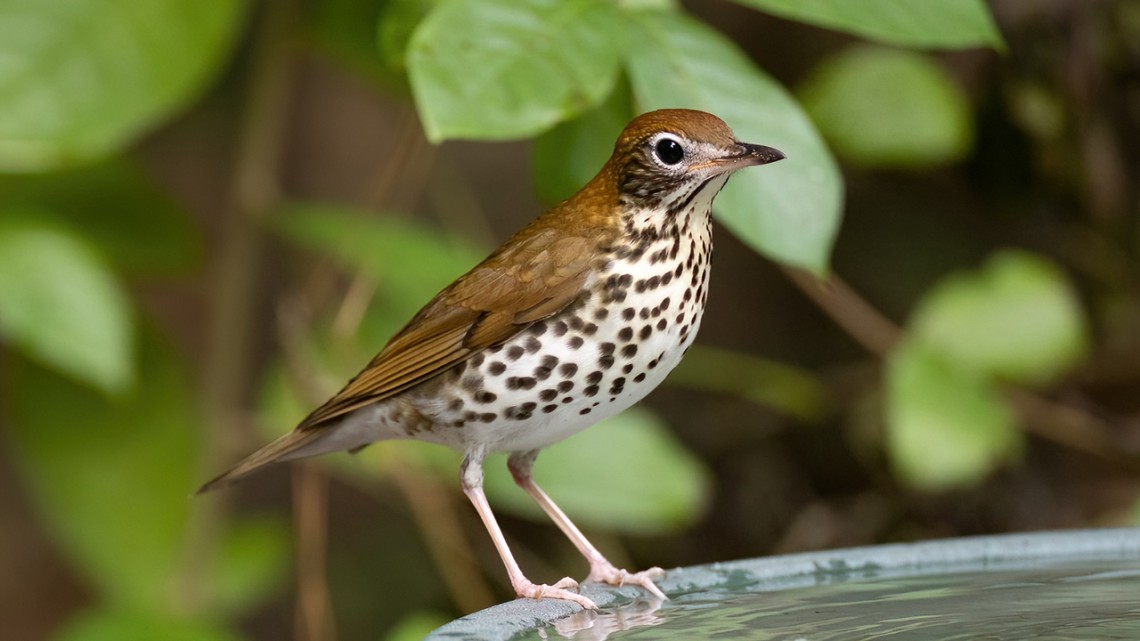
Wood thrush
‘Think globally, act locally’ with new bird conservation tool
By Pat Leonard
Nearly half of all bird species worldwide are declining, according to the 2022 State of the World’s Birds report. How do you tackle a challenge that big?
The Cornell Lab of Ornithology is doing it with the release of a game-changing tool called eBird Trends – the most expansive and detailed visualizations ever produced to show the trends of bird populations.
For the first time, people around the world, including conservationists, can zoom in to within an 8-mile radius to see exactly where each of 586 bird species is increasing or decreasing – providing localized insights needed to restore rapidly declining bird populations and habitats.
“You can’t solve what you can’t see,” said Daniel Fink, senior research associate at the Cornell Lab and science lead of the eBird Status and Trends project. “We’ve never been able to see population change with this level of detail across continental extents for so many species. With so many bird species in decline, the insights gained from eBird Trends are sorely needed.”
Trend maps for 586 species are currently available, mostly for the United States and Canada, where the necessary data exists. That number will keep growing as more data comes in from more locations through eBird, the Lab’s massive global database of bird observations.
Highly detailed visualizations from eBird Trends can make a difference for localized conservation, and will satisfy the curiosity of bird lovers.
“Raw eBird reports of species’ presence and numbers for every week of the year begin the process,” said Tom Auer, Cornell Lab geospatial data science lead. “We add in satellite data for such things as topography and weather. Then we apply cutting-edge statistical models and get an interactive map showing individual species’ localized population trends, from 2007 through 2021.”
A key point is that many birds have vast and variable home ranges that are variably impacted by human-induced changes. A species may be doing fine in one area, while just over the next hill others of the same species are struggling and declining.
“eBird Trends give us a new and sharper lens to detect and diagnose population changes, and that will revolutionize our ability to understand and conserve birds,” said Amanda Rodewald, Garvin Professor and Senior Director of the Center for Avian Population Studies at the Cornell Lab. “Knowledge is power. By serving as an early warning system for declines, eBird Trends gives us more opportunity and flexibility to protect species before they become candidates for the endangered species list.”
According to the 2022 State of the Birds report, when there are focused conservation efforts, birds respond. That’s the case for waterfowl, whose healthy populations are linked to long-term investments in wetland conservation – a case that stands as a beacon of hope for other habitats.
Dots tell the story in eBird Trends. Blue means the population at that location is increasing. Red means it’s declining. White means there’s not enough data to state with confidence which way the population is headed. Size also matters. Bigger dots mean more birds.
“We’ll be adding more functions to eBird Trends moving forward,” Auer said. “It’s a credit to all eBirders that we were able to create this level of localization, to make a daunting environmental issue something that individuals can understand and influence simply by reporting their backyard birds.”
Explore eBird Trends and learn how your favorite birds are faring.
Pat Leonard is a writer for the Cornell Lab of Ornithology.
Media Contact
Get Cornell news delivered right to your inbox.
Subscribe
